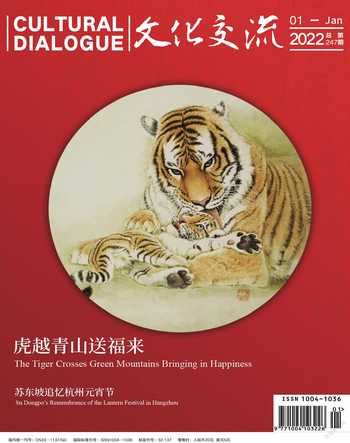The Chinese New Year in North America
By Chen Ruilin
On the eve of the New Year’s Day, in major cities of North America, watching the crystal ball on Times Square in New York falling down slowly, almost all hug each other excitedly, but the Chinese seem less so. Because for them, the real new year is at the end of the lunar calendar, when Chinese communities across the world celebrate in their own traditional ways the Chinese New Year — dragon and lion dance, reunion dinners with all kinds of traditional foods, fireworks and more.
The Chinese New Year, or Spring Festival, is the most important holiday for oversea Chinese and the most representative festival of Chinese culture as well. The history of the Chinese New Year can be traced back to 150 BC when it was first proposed by a Chinese astrologer. For more than 2000 years, its traditions have not only been passed down from generation to generation in China but also spread all over the world by overseas Chinese.
The Chinese nation is unique. Among the ancient civilizations in the world, only the Chinese culture has been well preserved and inherited, more dynamic and vibrant today than ever. The inherent power of the Chinese culture and the diligence of the Chinese people derive largely from an agriculture-based culture as well as strong family ties.
Therefore, for the Chinese people, the festival has gone beyond the simple meaning of the beginning of a new year. All the traditions associated with it signify the Chinese people’s strong sense of family and their love for the nation. For overseas Chinese, the ceremonies associated with the festival also imply nostalgia and reaffirming one’s national and cultural identity. Living in foreign countries, overseas Chinese need these rituals to dispel the loneliness of wandering. Besides, people could connect with each other in various reunion banquets held in the name of the “new year”, which makes the Spring Festival quite practical as well.
According to relevant historical records, Chinese began to arrive in the United States as early as 1785, when the United States had been independent for only nine years. Later as gold mines were discovered in California in 1849, tens of thousands of Chinese labors set foot on this land to pursue their gold dreams. Maybe few knew that in 1879, an official of the Qing dynasty (1616-1911), Ge Kunhua (1838-1882), was employed by Harvard University to teach Chinese. At that time, newspapers on the eastern coast of the United States often reported on Ge’s lectures and the number of Chinese in that area already reached over 400. We can reasonably believe that it was in the 19th century that the Chinese people started celebrating the Chinese New Year in North America.
More than 200 years have passed since then, the social status of overseas Chinese has improved greatly. The Chinese New Year celebrations become more and more popular and influential throughout the world. In recent years, many communities in North America have called for the designation of the Chinese New Year as an official festival.
The celebrations in North America during the festival period mainly include official celebrations and folk celebrations. The official ones usually mean that governments at all levels send congratulatory letters to the Chinese communities. Folk celebrations, one the other hand, are mostly organized by various local Chinese associations.
Take Huston as an example. The biggest festive events in the city are the two fairs, namely the Texas Lunar Festival presented by Southern News Group for 24 consecutive years and the Lunar New Year Festival hosted by the Chinese Community Center in Houston, which are among the most popular festivities honoring Chinese culture and traditions in the area.
During the events, many prominent figures gather at the center of Houston’s Chinatown, with all kinds of performances from morning to afternoon, and there is always a huge crowd in front of the stalls at the fairs. For instance, in 2011, Annise Parker, mayor of Houston, delivered a speech at the celebrations, and members from the congress, state legislature as well as city councils were also present. They know all too well the importance of the Chinese American votes. The Chinese New Year has apparently entered the mainstream society.
More significantly, these Spring Festival fairs can help with the inheritance of the Chinese culture to the next generation. Every year, I see many parents bring their children along to these events to learn something about the Chinese culture, including traditional Chinese food, lanterns, paper cutting, traditional Chinese costumes, silk, traditional Chinese performances like Kungfu (or martial arts), lion and dragon dance, among many other things.
Indeed, during the celebrations, overseas Chinese children often cannot wait to ask their parents to bring them to the fairs. However, they may well have to wait for another year as most activities will be held online for the 2022 Chinese New Year amid the ongoing COVID-19 pandemic. Every overseas Chinese is looking forward to the day when it is defeated and the joyful Chinese New Year returns to North America!

